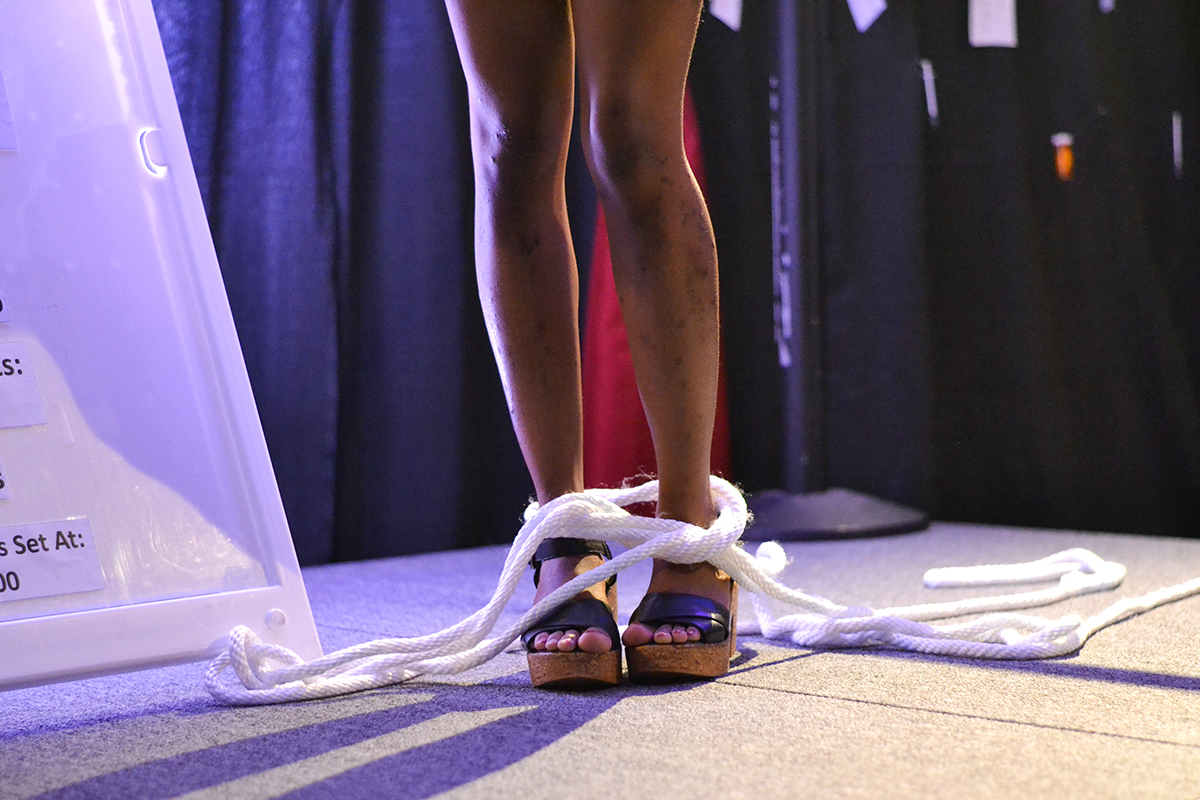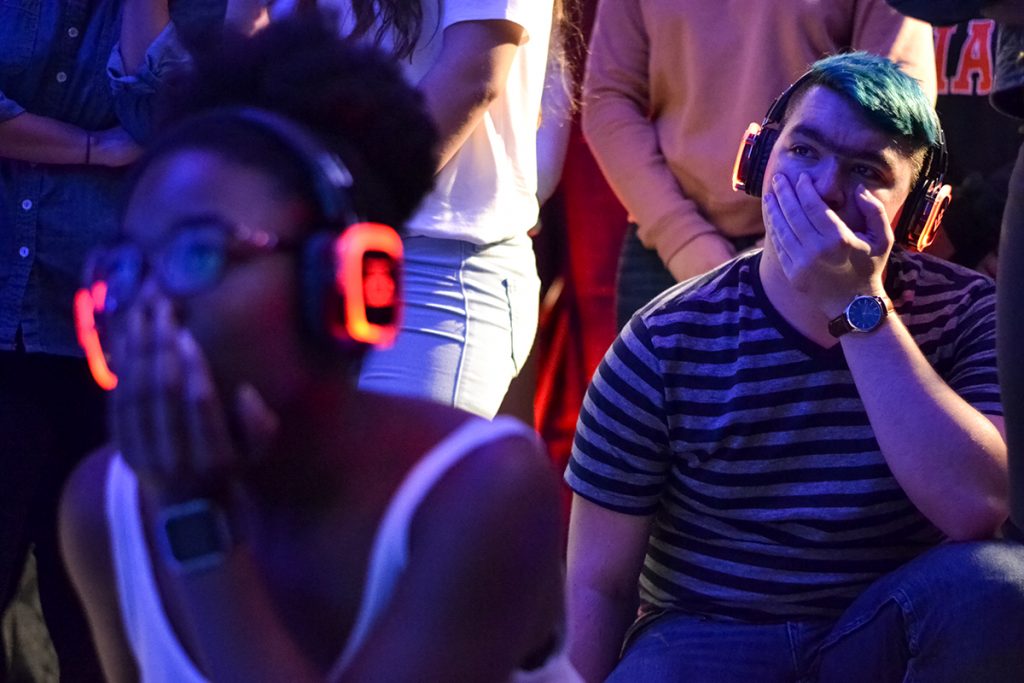

The depiction of a real-life terror attack in U.S. history in one of the rooms of the annually held Tunnel of Oppression left many University of Miami students with a lasting impression.
Tunnel of Oppression, an installation composed of nine rooms, is a multi-sensory, comprehensive experiment designed to highlight some of society’s largest issues. Each room, designed by a student organization, displays a perceived problem plaguing individuals throughout the world including environmental, racial and economic issues. Participants were supplied with wireless headsets controlled by the tour guides throughout the tour of the tunnel.
One of the rooms, crafted by SpectrUM and OSTEM to depict stigma faced by the LGBT community, was filled with plastic red solo cups, a toilet with smeared red paint and “Do not cross” tape throughout. The environment was created to portray the largest mass shooting in U.S. history, the Pulse nightclub shooting.
On June 12, 2016, Omar Mateen, 26, opened fire at Pulse, an LGBT club in Orlando. The attack left 49 people dead and 51 others wounded.
During the tour of the room, gunshots rang inside the ears of the participants through their headsets.
One of the students inside the exhibit, senior Jacob Rudolph, became emotional while staring at pictures of the victims. Nearby, a large poster board hung with the tweet the nightclub sent out the night of the massacre, telling patrons to “get out of pulse and keep running.”
Though it was Rudolph’s second time attending Tunnel and he said he knew the experience would be “intense,” the realistic nature of the room left him hurting.
“I wasn’t expecting to cry as hard as I did,” he said. “Ultimately, every living thing is connected and when we commit violence and hate against each other, we’re also hurting ourselves in the process.”
For Rudolph, the memory of the morning he found out about the shooting is still hard to process. He said he spent days crying and feels the “trauma of that day” still inside him.
Rudolph wasn’t the only one affected emotionally by the sobering atmosphere of the room. Sophomore Ella Johnson said the room personally affected her, describing it as “disturbing.” She said it’s important for UM students to experience going through the Tunnel because it’s a way of becoming aware of fears people from certain communities face on a daily basis.
“There are a lot of people — or at least some people — that may not know about all the different issues that every single group may face,” Johnson said. “The tunnel goes through every single thing that people may face as humans and as individuals.”
Other rooms throughout the tour were focused on issues relating to other marginalized groups, including women. When students entered the women’s room, their headsets blared with hip-hop songs spewing objectification of women, including “You call this sh-t rape but I think rape fun,” followed by a spoken word poem performed by a woman saying “I’m sorry” for inciting sexual assault.
“I was shocked to see how this graphic and hateful culture was incorporated into my everyday life. I was in disbelief,” Lindsey Bornstein, a freshman, said after the experience.
Over the last four years, attendance at Tunnel of Oppression has tripled. Those involved in the creation of the event said that now, more than ever, it is important to keep the Tunnel alive.
Senior Tory Marks, who serves as the co-chair of Tunnel of Oppression, spoke on the importance of having this event so that the campus could see how prevalent these issues are.
“No matter who is in power, people are going to disagree, so it is important to see both sides of the coin,” Marks said. “A lot of the same issues still exist, but they evolve.”





